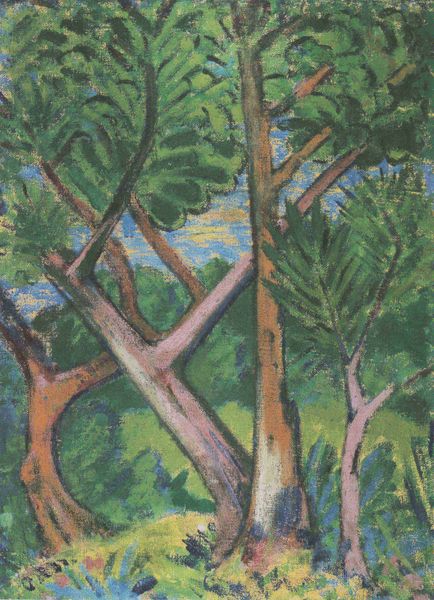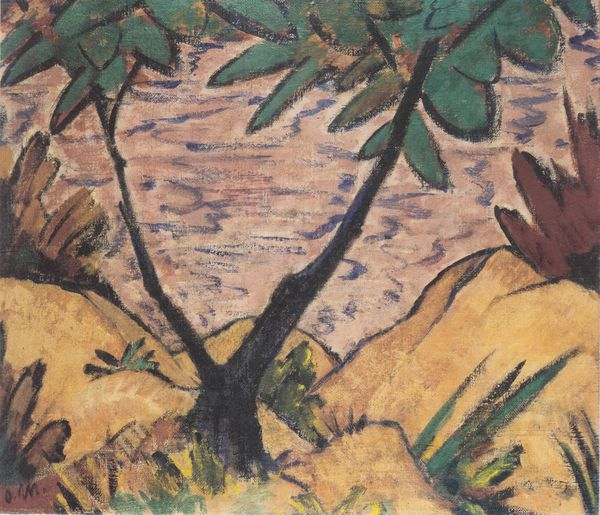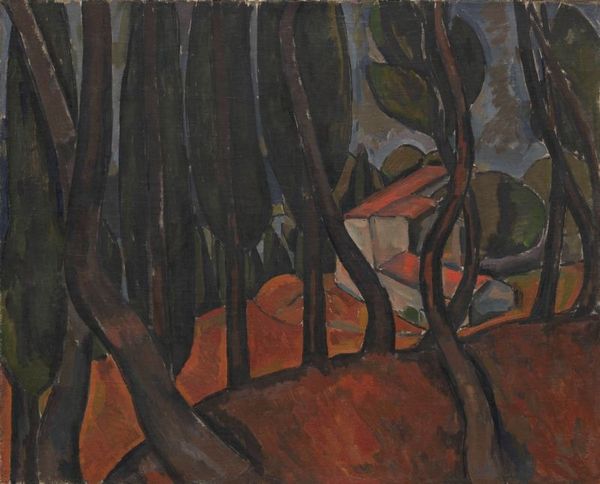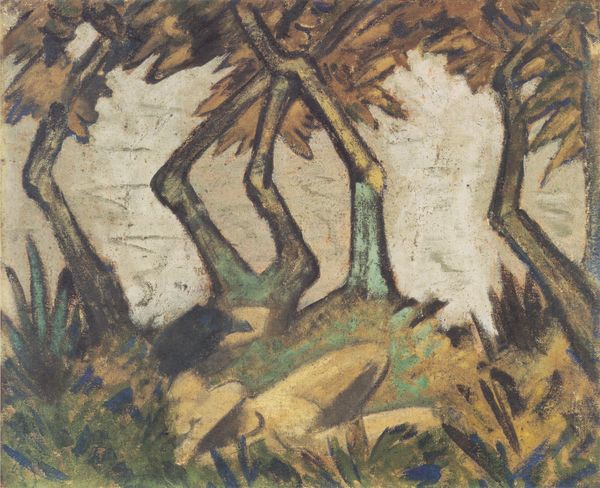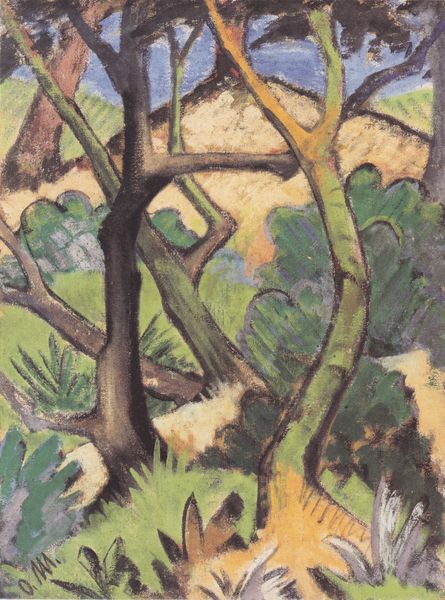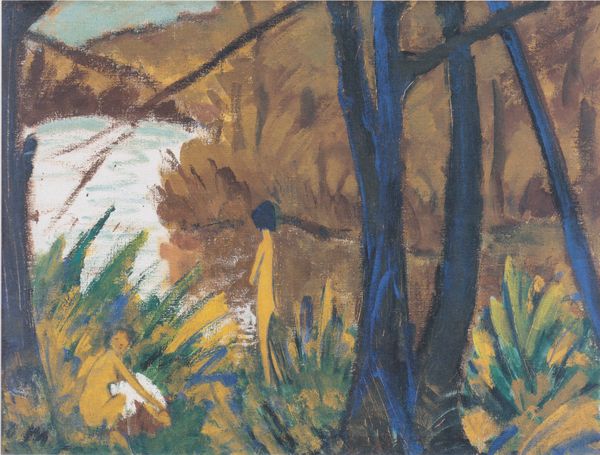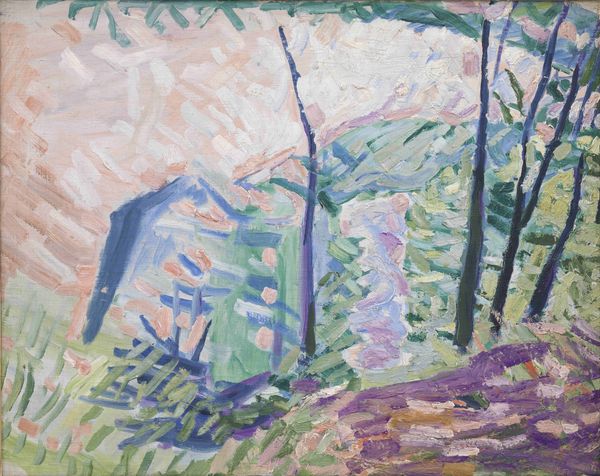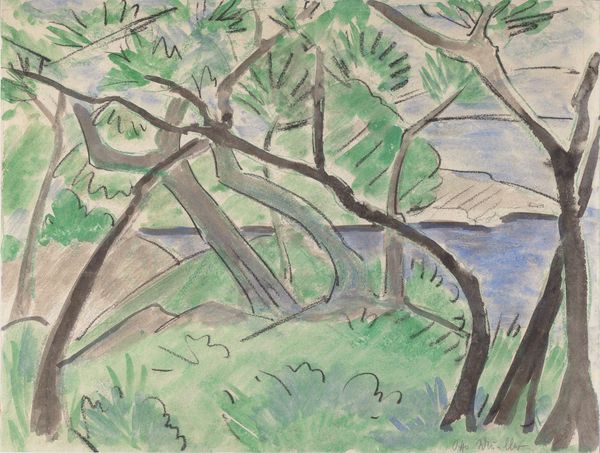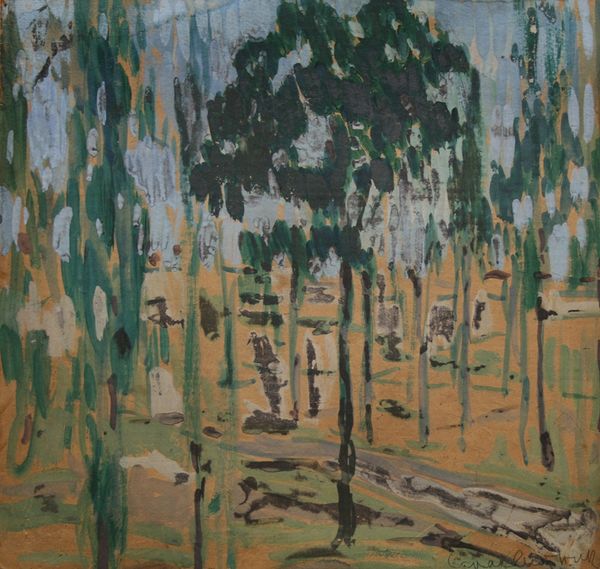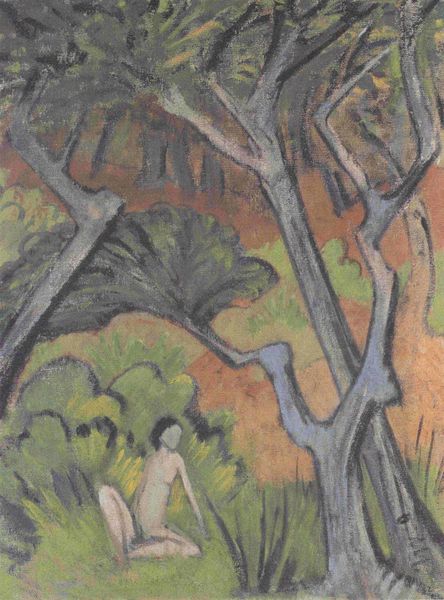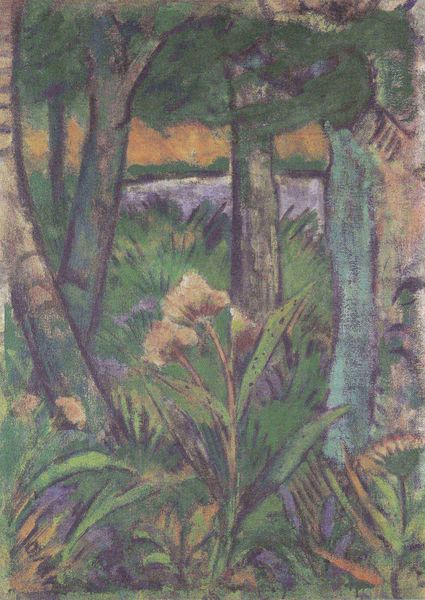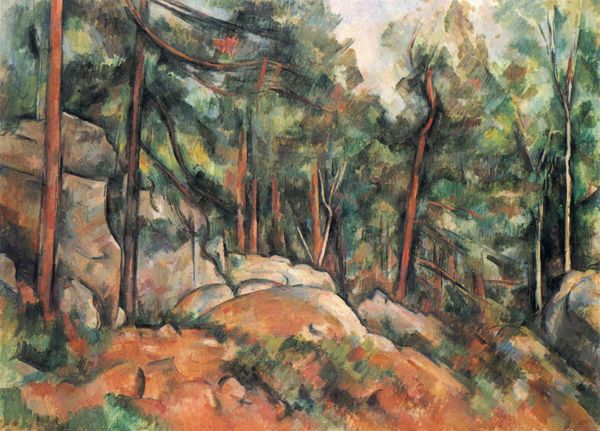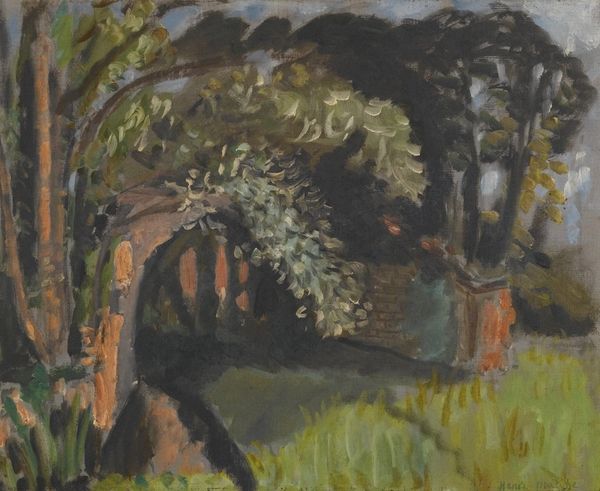
tempera, painting
#
tree
#
tempera
#
painting
#
landscape
#
geometric
#
expressionism
Dimensions: 105.5 x 77 cm
Copyright: Public domain
Curator: This is Otto Mueller’s *Landschaft III*, created around 1924. It’s a tempera on canvas and currently resides here at the Folkwang Museum in Essen. Editor: My initial thought? Calm. The muted tones and slightly geometric quality of the trees and foliage give it a sort of peaceful stillness. Curator: It's interesting you pick up on the stillness. Mueller’s work, especially his landscapes, often serve as a bridge between the rapid industrialization of Germany at the time, and a longing for an untouched, more primal world. Tempera paint would’ve been a deliberate choice. It has a matte finish, lending itself to that kind of earthly rawness, compared to something like oil paints, which would yield greater illusion. Editor: Absolutely, that tactile quality underscores the artist's intention, doesn't it? You can almost feel the grain of the canvas, the unmixed pigments of the paint. And consider the labor of the landscape, even. Are we seeing the idealized vision of pastoral escape or something more reflective about the cultural implications of natural resource extraction? The deliberate choice of medium itself comments on the evolving societal perception of the natural world. Curator: Precisely! There is this sense of idealized nature. But to go a bit further on your remark about the socio-cultural elements influencing art creation, one must note the time frame. The Weimar Republic was fraught with political and economic instability. The Expressionist movement itself became almost a form of cultural defiance against those oppressive constraints. The longing expressed through landscape painting takes on political dimensions of escape and even, hope. Editor: And you have this simplification of form… almost abstracted, really. That geometric inclination almost removes any human labor directly from the piece. This absence, in its own way, raises interesting questions about our involvement and exploitation within our landscape. Does this represent control over our natural resources or some inherent loss from distancing ourselves from physical labor? Curator: That's very insightful! This blending of raw materiality and an absence of visible human labor becomes very central to understanding *Landschaft III*, wouldn’t you agree? Editor: I concur entirely. Examining art in this fashion offers compelling glimpses into production, artistry, culture, labor, and even our future, doesn't it? Curator: It truly does.
Comments
No comments
Be the first to comment and join the conversation on the ultimate creative platform.
